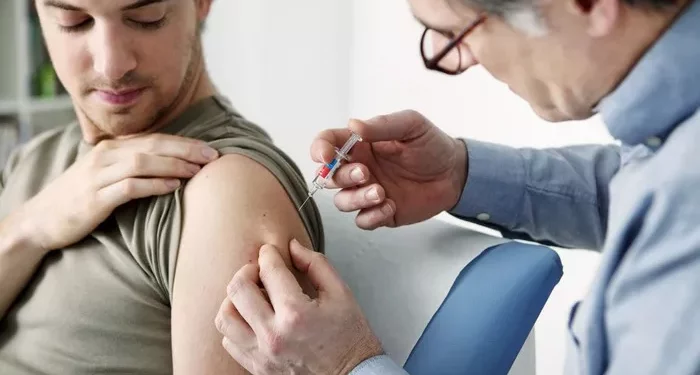Shingles, a painful and often debilitating condition, is a source of significant worry for many, particularly when it comes to the possibility of recurrence. If you’ve experienced shingles before, it’s natural to be concerned about whether it might return. Understanding the risk factors, symptoms, and preventive measures can help manage this concern and reduce the likelihood of recurrence.
SEE ALSO: Is Shingles Infection Contagious?
Understanding Shingles
Shingles, medically known as herpes zoster, is caused by the varicella-zoster virus, the same virus responsible for chickenpox. After recovering from chickenpox, the virus doesn’t leave the body. Instead, it becomes dormant in nerve tissues and can reactivate years or even decades later, causing shingles. The hallmark of shingles is a painful rash, often accompanied by blisters, that typically appears on one side of the body or face. The pain can be severe, and in some cases, it may linger long after the rash has healed, a condition known as postherpetic neuralgia (PHN).
Recurrence is Possible
The possibility of shingles returning is a real concern, though it does not happen to everyone. While shingles can recur, it is not guaranteed. Statistics suggest that about 1 in 3 people in the United States will develop shingles in their lifetime, and of those, roughly 5-10% may experience a recurrence. Understanding why shingles might come back can help you take steps to reduce the risk.
Factors Influencing Recurrence
Several factors can influence the likelihood of shingles returning. Being aware of these can help you understand your own risk and take preventive actions where possible.
Weakened Immune System: One of the primary factors contributing to shingles recurrence is a weakened immune system. This can be due to aging, certain medical conditions like HIV/AIDS, cancer, or diabetes, or the use of immunosuppressive medications. As the immune system becomes less effective at keeping the varicella-zoster virus in check, the risk of reactivation increases.
Previous Episodes: Having had shingles once does make it more likely that you could experience it again, although the exact frequency varies from person to person. Recurrence may occur in the same location or a different part of the body.
Vaccination Status: Vaccination is a key factor in reducing the risk of shingles recurrence. The shingles vaccine, recommended for adults over 50, can significantly lower the chances of the virus reactivating, even if you’ve had shingles before. The vaccine works by boosting the immune system’s ability to keep the varicella-zoster virus dormant.
Recurrent Shingles
Recognizing the symptoms of shingles is crucial, especially if you’ve had it before. Recurrent shingles usually present with similar symptoms as the initial episode, including:
A painful rash that may be preceded by tingling, itching, or burning sensations in the affected area.
The rash typically develops into clusters of fluid-filled blisters.
The rash is usually localized to one side of the body or face, often following the path of a nerve.
Additional symptoms may include fever, headache, and fatigue.
If you notice these symptoms, particularly if you’ve had shingles before, it’s important to seek medical advice promptly.
Medical Advice
Early diagnosis and treatment can help reduce the severity and duration of the symptoms, as well as the risk of complications such as postherpetic neuralgia. Your doctor may prescribe antiviral medications, which are most effective when taken early in the course of the disease, along with pain relievers to manage discomfort.
Treatment Options
For those dealing with recurrent shingles, treatment typically involves:
Antiviral Medications: Drugs like acyclovir, valacyclovir, or famciclovir can help speed up healing and reduce the intensity of the symptoms.
These medications are most effective when started within 72 hours of the appearance of the rash.
Pain Management: Pain from shingles can be severe. Over-the-counter pain relievers like ibuprofen or acetaminophen can help, and in some cases, stronger prescription painkillers may be necessary.
Topical Treatments: Creams or patches containing numbing agents or capsaicin can help alleviate the discomfort associated with shingles.
Preventing Recurrence
Taking steps to prevent shingles from coming back is essential, particularly if you are at higher risk.
Vaccination: Getting vaccinated is the most effective way to prevent shingles and its recurrence. The CDC recommends the shingles vaccine for adults over 50, and even those who have had shingles before should consider getting vaccinated to reduce the risk of another episode.
Healthy Lifestyle: Maintaining a healthy lifestyle is another key factor in preventing shingles recurrence. A balanced diet, regular exercise, and effective stress management can help keep your immune system strong, reducing the likelihood of the virus reactivating.
While the thought of shingles returning can be daunting, taking proactive steps, including vaccination and maintaining a healthy lifestyle, can significantly reduce the risk and help you manage the condition if it does come back. With the right care and support, you can navigate the challenges of shingles recurrence and focus on leading a healthy, fulfilling life.
Realted Topics:



























